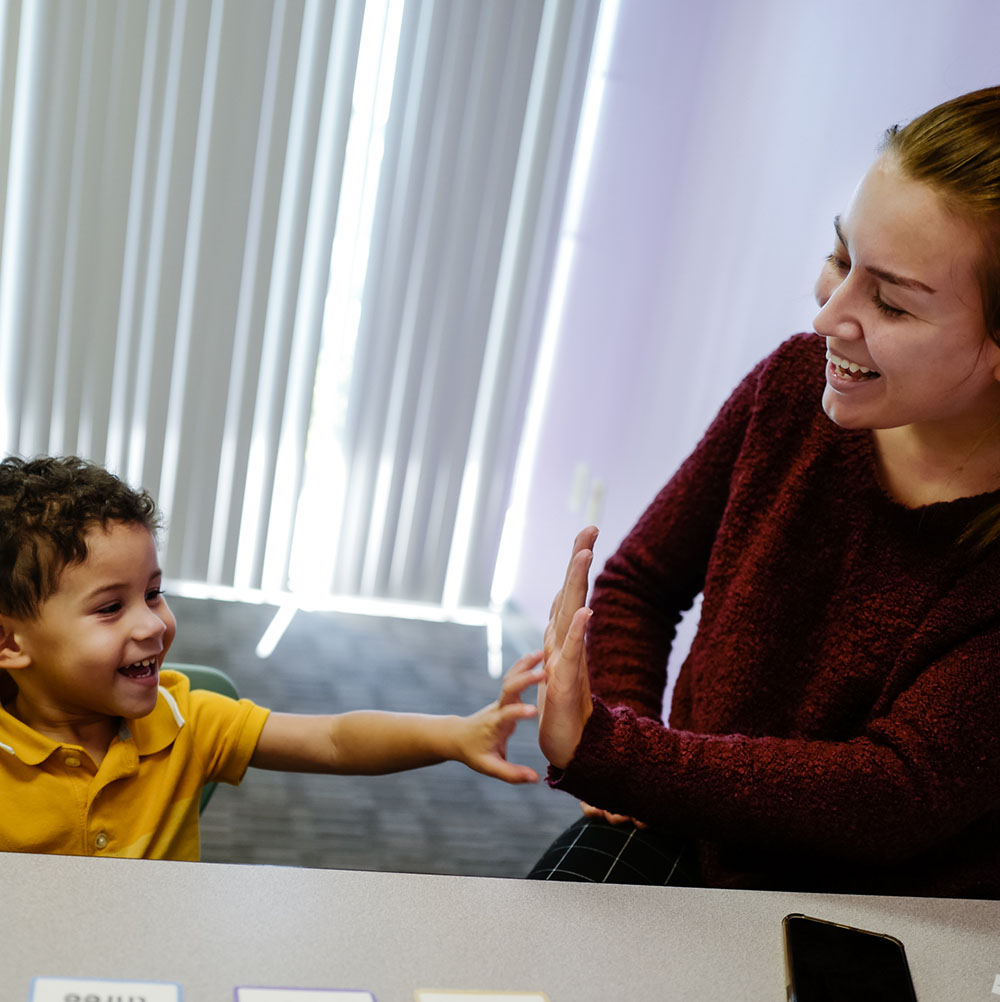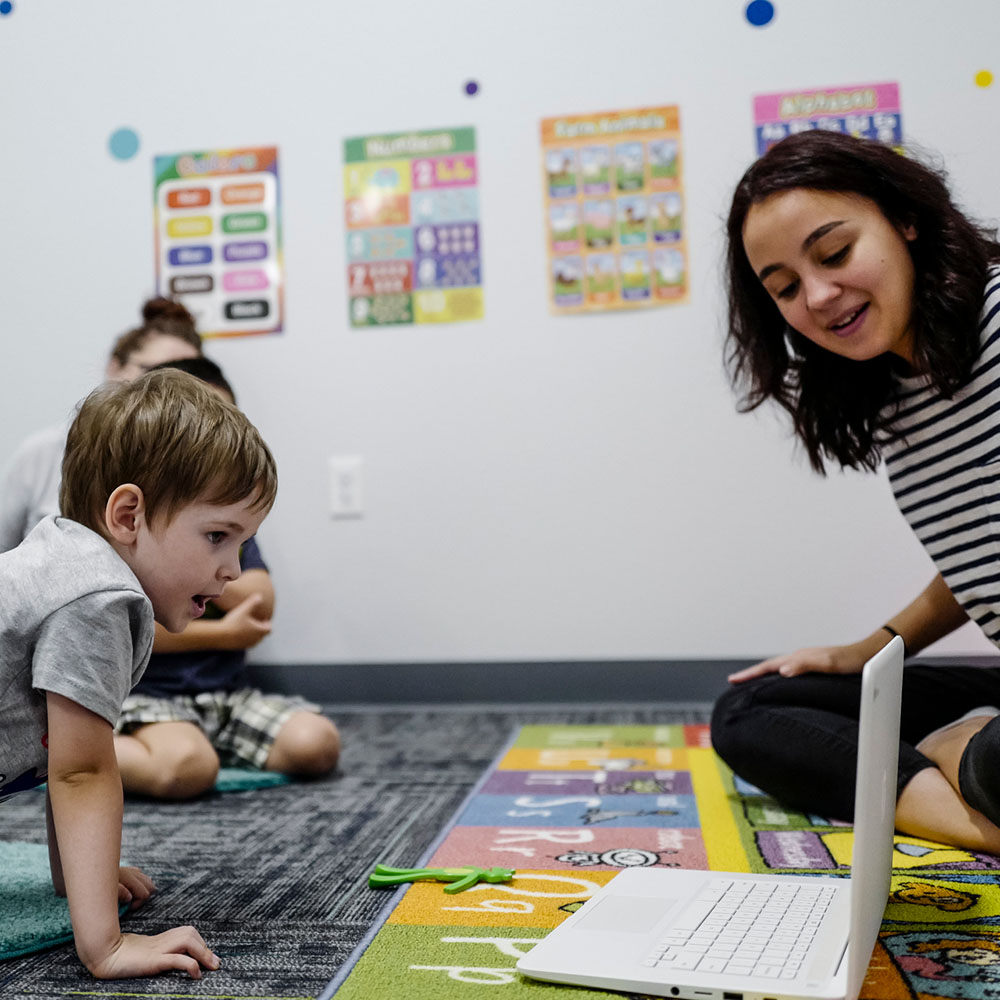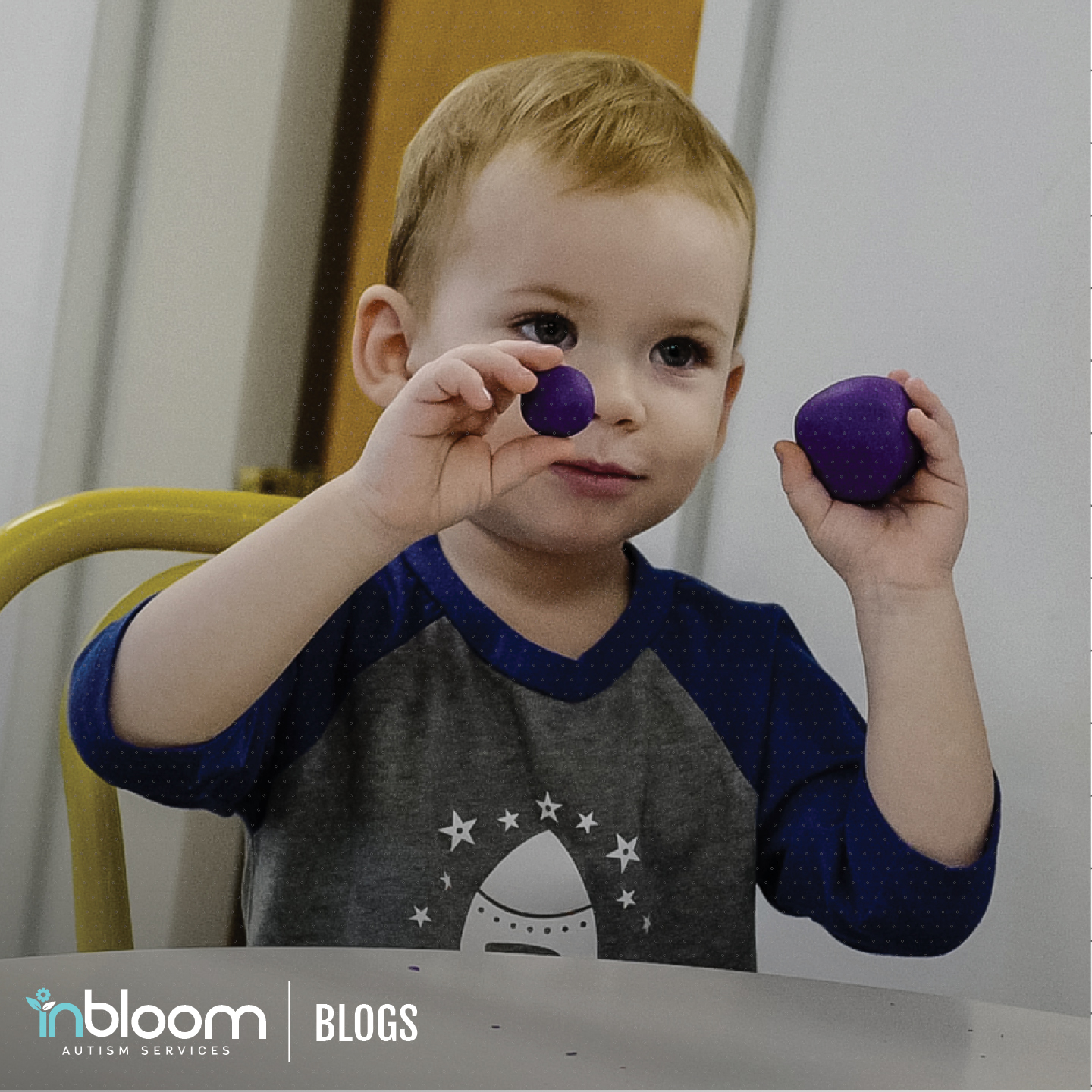Functional Communication in ABA Therapy
At InBloom Autism Services, we use a variety of effective teaching methods, such as Functional Communication Training, as part of each child’s personalized therapy. Well-rounded therapy can help your child thrive, build important life skills, and learn to socialize positively.

Understanding Functional Communication Training
What is Functional Communication Training? FCT is an evidence-based method for helping a child replace challenging behaviors with effective communication strategies. To understand FCT, let’s explore the connection between behavior and communication.
Identifying the Function of Behavior
It’s important to understand the function of behavior in children, specifically children on the autism spectrum. Behavior can often function as communication. Sometimes, as a result of being unable to communicate effectively, an autistic child may use behavior to communicate a basic want or need. Though this behavior can be challenging or less than ideal, it is important to understand that the child using it is simply trying to communicate.
When a child doesn’t have a positive communication tool in their toolbox, they may use a behavior as a substitute. For example, they may scream to get someone’s attention. When this behavior gets the desired result, it is reinforced and becomes a pattern. The key is equipping the child with the alternative tools they need to communicate.
Replacement Behavior
Functional Communication Training addresses challenging behavior by helping children find constructive replacement behaviors that help them communicate effectively and safely. The replacement behavior is chosen carefully for the child. The goal is a behavior or communication that is easy for others to understand, simple, and easily learned by the child.
To return to our above example, a therapist may teach a child to raise their hand to get attention in a group. Once learned, this replacement behavior can replace the challenging behavior of screaming. The child has a new tool in their communication toolbox–one that is positive, socially recognizable, and effective in many real-world settings.

Implementing Functional Communication
At our ABA therapy centers, experienced therapists seamlessly weave FCT into your child’s therapy. There are three main parts of implementing FCT:
Identifying a Challenging Behavior
A therapist may observe a challenging behavior in a child. They take time to determine what the child is trying to communicate with that behavior.
Teaching and Building the New Skill
Your child’s therapist will work with them on learning the new skill. Through consistency and encouragement, your child can learn to use a communication tool that can help them connect to others and express their needs.
Choosing a Replacement Behavior
Finding an effective, positive replacement behavior is the next goal. This behavior may be different for each child. A replacement behavior may be verbal communication, a gesture, or using an alternative communication device (like a tablet).
Challenges and Solutions
Progress in FCT can take some time, and there may be some bumps along the road, but positive results are truly within reach for your child.
Addressing Disruptive and Difficult Behaviors
Steering kiddos away from challenging behaviors takes time and patience. It’s important to understand that their behavior and the distress that may accompany it is often simply caused by a desire to communicate and frustration when they can’t.
By consistently encouraging a replacement behavior and not reinforcing or responding to a challenging behavior, a therapist can gently guide a child toward making the replacement behavior part of their communication toolbox. It takes time and consistency, but it really works!
Maintaining Progress
As with other methods within ABA therapy, consistency and repetition are the keys to maintaining progress. Consistent positive reinforcement of the replacement behavior is essential. Reinforcement may include words of praise and ensuring that the positive behavior receives the desired response. As an example of Functional Communication Training, the therapist calls on a kiddo when they raise their hand to get attention rather than using a challenging behavior.
On the other hand, if a child slips back into a challenging behavior, it’s important not to reinforce the challenging behavior. Instead, gentle prompting and instruction can help a kiddo become more consistent in using the replacement behavior.
Ensuring new replacement behaviors become a consistent part of your child’s communication toolbox requires consistency and collaboration among everyone on their therapy team, including therapists and family members. By encouraging effective communication in multiple settings and with different people, your child can make great strides and maintain their progress.


Let InBloom Autism Services Help – Get Started Today!
We recognize that everyone is at a different point in their journey with an Autism diagnosis. So, we specialize in helping you start on a path to support, guidance, and growth at an autism therapy center near you. Our InBloom Care Team is here for you and your family. We are happy to answer any questions you may have.






